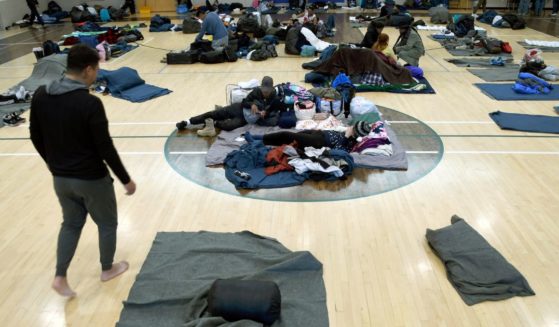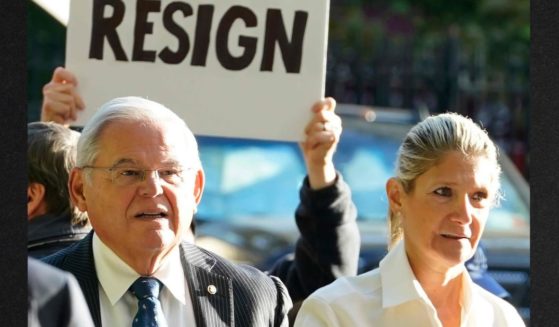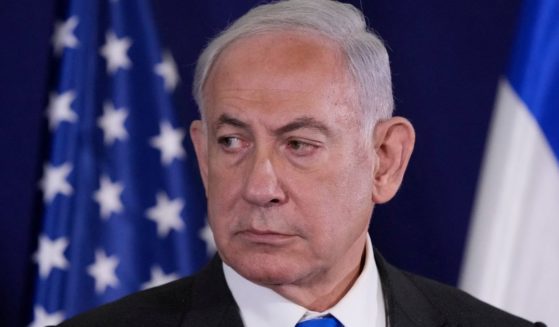Iran Has a Long History of Hating the US
Defense Secretary Mark Esper said on Tuesday that “we are not looking to start a war with Iran, but we are prepared to finish one.”
“What we’d like to see is the situation de-escalated,” he added.
The next day Iranian missiles hit U.S. bases in Iraq.
Iranian Foreign Minister Mohammad Javad Zarif claimed that “our action was a legitimate self-defense and the United States should avoid assessing it based on illusions.” Iran has again proven its nerve; it is the one that should avoid making assessments based on illusions.
President Donald Trump said on Wednesday that Iran “appears to be standing down” after its latest attack. The president vowed to continue with the pressure on Iran by using sanctions.
It all followed the escalation in U.S.-Iran relations after a U.S. airstrike killed top Iranian official Gen. Qassem Soleimani. It was another chapter in the prolonged conflict between the two states.
In the 1970s the United States and Iran were allies. Iran was important due to its huge oil reserves, large population, vast territory and strategic location. The United States sold Iran weapon systems such as F- 14 fighters. Iran and the United States had common enemies such as the Soviet Union.
The 1979 Islamic revolution changed this picture. Iran’s new leader, Ayatollah Khomeini, declared that the United States an enemy. It was the start of a long conflict, which included clashes between the two states in the 1980s. The United States also supported Saddam Hussein in his war against Iran at the time. Later on, after 9/11, during the wars in Afghanistan and Iraq, Iran assisted insurgents who attacked U.S. forces. Iran did not pay the penalty for its subversion against the United States.
Iran opposes the United States for several reasons.
The regime sees the United States as one of its biggest challenges due to American might and military deployment in the Middle East. Iran has been conquered several times in the past.
The last time, it fell to two world powers, the United Kingdom and the Soviet Union. Iran fears it might happen again, even if there is no basis for that fear. Although the United States has no desire to invade the country, that does not reduce Iran’s concerns.
Iran strives to gain hegemony in the Middle East and seeks to reduce (and if possible to wipe out) the U.S. presence in this region. The United States is a superpower and Iran is a regional power solely.
The United States, however, has to divide its resources and manpower across the world while trying to focus on areas like East Asia. Iran, meanwhile, can concentrate its resources in the Middle East.
Over the years, the U.S. had to deal with different powers that had autocratic regimes. The Iranian regime is autocratic too. It is worried that American influence on the Iranian public will undermine its rule and eventually bring about its downfall.
The United States sought to prevent any state in the Middle East from becoming too strong if that state was hostile toward the United States. In the 1950s and 1960s, Egypt strove to become the dominant power in the region. Later on, there was the rise of Syria and Iraq. The United States had to deal with all of them — some more, some less. The United States helped Israel and Arab states that were under threat. The most known example was the liberation of Kuwait in the 1991 war. Now Iran assumes it is its turn to reach hegemony. So the United States has to restrain Iran.
Many Arabs see the United States as an enemy. Some of those Arabs don’t like Iran, either. Although Iran is mostly Shiite, while most of the Arabs are Sunnis, all of them are Muslims. Iran presents the United States as a common enemy of both Iranians and Arabs in order to gain support in the Arab world.
Iran has several proxies across the Middle East, part of its plan to control the region. Those groups confront U.S. allies.
Israel, with an American arsenal, fights Iran’s forces and its protégés in Syria and the Gaza Strip — Palestinian Islamic Jihad and Hamas. Saudi Arabia confronts the Houthis in Yemen with American support.
If Iran’s partners get weaker, it will reflect on Iran itself.
The Shah Mohammad Reza Pahlavi ruled Iran until 1979. The shah was the nemesis of the Islamic revolution. The United States had close relations with the shah. The current Iranian regime never forgot that in spite of all the time that passed since then.
Iran still associates the United States with the shah. The latter is dead. Iran wishes the same fate to befall the United States too. No wonder why Iranians call for “death to America” again and again.
As Brian Michael Jenkins at the RAND Corporation put it, “Iran is a master of hybrid warfare.”
Iran knows well it can’t match the United States in the conventional battlefield. Therefore Iran will rely on hybrid warfare, where it may have the upper hand, hoping not to absorb a massive retaliation.
The Iranian regime, therefore, has strategic, ideological and psychological reasons to confront the United States although it knows well it can’t defeat (let alone annihilate) the foe.
The U.S. has to block and contain Iran, including by force when it is required, and must also win the battle of ideas by showing how evil, wrong and dangerous Iran’s policies are.
The views expressed in this opinion article are those of their author and are not necessarily either shared or endorsed by the owners of this website. If you are interested in contributing an Op-Ed to The Western Journal, you can learn about our submission guidelines and process here.
Truth and Accuracy
We are committed to truth and accuracy in all of our journalism. Read our editorial standards.












